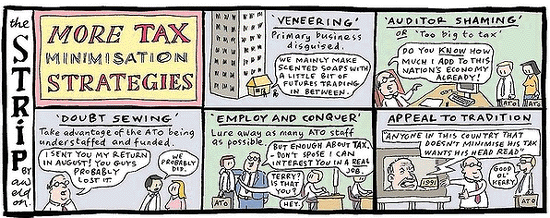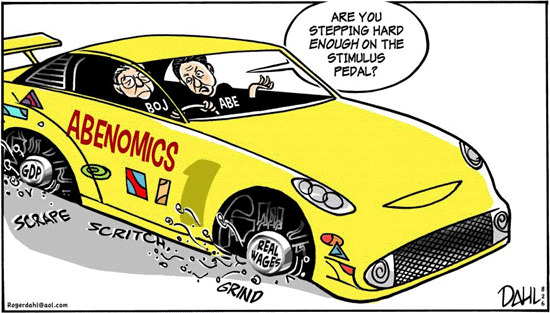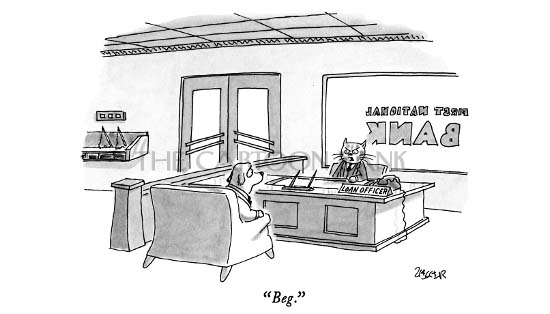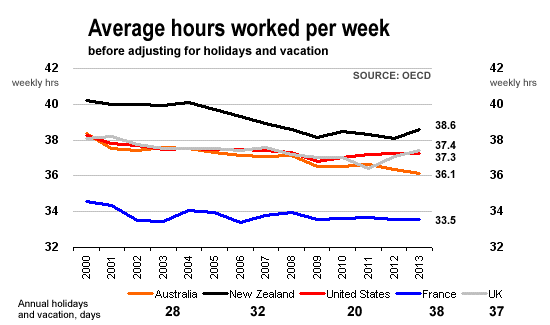
(This item was originally published on Monday, October 13, 2014)
Here's my edition of Top 10 links from around the Internet today.
We have a Monday-Wednesday-Friday schedule for Top 10. Bernard will be back with his version this Wednesday. We will have another guest posting on Friday.
As always, we welcome your additions in the comments below or via email to david.chaston@interest.co.nz.
See all previous Top 10s here.

1. Construction wood gets a big new friend
Last week, a region of China suffered a 6.6 magnitude earthquake. 324 people were injured and there was one death. The low death toll is being ascribed to the fact that most houses in the region have been built of wood.
That is not common in China, certainly not in 'new China'.
But Chinese officials have noticed.
The Canadians have jumped in to remind the Chinese of the safety of wooden-framed houses, and the fact that buildings up to six stories can be safely built that way.
Chinese officials are urging their builders to adopt the material.
I know recent high inventories in China have buffeted that soft-wood trade between New Zealand and China, but it may not be long before a new long-term era of growth returns to this trade. New Zealand is extremely well-placed to benefit, having become China's preferred soft-wood supplier recently.
Mr. Tao said Chinese building code permits wood framed homes up to three floors, whereas the Canadian provinces of British Columbia and Ontario allow buildings up to six floors. He said 200 to 300 builders in China are trained in modern methods to erect wood framed-homes, while some major property groups are also embracing the material. The group says the modern building system, called the two-by-four or light-wood frame, is superior to more slapdash methods used in many traditional Chinese wooden homes.
Many people in China, he said, associate wood with traditional construction and risks. Two-thirds of the hilly ancient town that claims the name of Shangri-La, also in Yunnan province, burned virtually to the ground in January during a massive blaze of its wooden homes.
“That’s not because of wood,” said Mr. Tao, adding that instead it reflected poor construction.
After this week’s quake, Wang Bin, a vice chief of Yunnan’s seismological bureau, also credited as relatively quake-proof the region’s wooden structures, according to Xinhua.

2. 'The Euro crisis is not over yet'
An extended period of calm on the bond markets has led many in Europe to conclude the euro crisis is over. But German central bank head Jens Weidmann says in an interview that the coast still isn't clear and that there is still great need for reforms.
You shouldn't mistake the thermometer for the illness. I have never disputed that the ECB could impress and move the markets with the announcement that it would make massive purchases of sovereign bonds if necessary. But such measures focus on the symptoms and don't cure the causes of the crisis. As such, the current calm is misleading and even dangerous, because it takes pressure off of the governments to implement badly needed reforms. If they are not undertaken, investors could quickly change their risk evaluations.

3. Explaining the 'rock star' tag
Back on September 18, a few days before the General Election, Statistics NZ announced that New Zealand's real GDP rose +3.5% p.a.. That is pretty good and the envy of many other OECD countries. Deeper in that release was the per capita data but that only rose +1.8% p.a.
However (and H/T to Ross Gittins of the SMH for the pointer), there is a better way to measure economic activity, "real gross national disposable income" (RGNDI). This measures the real purchasing power of national disposable income, taking into account changes in the terms of trade, and real gains from net investment and transfer income with the rest of the world. Effectively, it is a measure of the volume of goods and services New Zealand residents have command over.
Believe it or not, RGNDI increased +7.8% in the June 2014 year, compared with an increase in GDP of +3.5% over the same period. This is the largest annual increase in RGNDI since the series began in the June 1987 quarter, according to Statistics NZ. (Remember, this is 'real' after inflation-adjusting, not 'nominal'.)
The chart that Statistics NZ supplied with their release in fact shows that growth in RGNDI is taking off.
So much of our GDP is 'captured by foreigners' in international trade that it is hard to extract what is domestically relevant. But after making that adjustment, this RGNDI is spectacular. Heck, the last equivalent Chinese number for RGNDI I could find was only +7.0% !!
Maybe history won't have any trouble explaining why the incumbent Government got re-elected handily for a third term.

4. Afraid of deflation?
We all 'know' that excessive inflation is a bad thing, but that any deflation could be worse. Why? Because when the value of money rises (ie prices fall) you hold on to it in expectation of things costing less in the future.
And if everyone does that, demand falls, output falls, and jobs start to disappear.
But is that right? After all, fear of deflation is pretty universal right now.
However, David Andolfatto who works at the St Louis Fed, doesn't think the actual evidence is that strong to justify the fears.
He looked at Japan, the US, the UK and bitcoin and basically found that in the episodes when prices were falling, transactions (economic activity) actually rose more healthily in deflation than inflation.
Are our fears unfounded? It seems that few consumers are 'rational' in the assumed way. They seem to like the rising value of money and express that confidence in spending more now.
Maybe economists and policy-makers need to re-think some assumptions. Perhaps its only the 'investors' in property who are worried. We may need to re-calibrate the psychology of the wealth effect (that is, away from property).
Here is Andolfatto's argument.

5. "Countries like New Zealand and Peru ..."
The ideal work-life balance is to work three days a week, 11 hours a day, until you’re 75. That’s what Mexican billionaire Carlos Slim told CNN in a recent interview.
6. Getting closer to the 'promise'?
I spent a few years living and working in Seattle, so I was interested in this University of Washington item about the the long-talked-about, but-never-delivering concept of fusion energy. Apparently a local physics lecturer proposed a novel plasma control concept (a key prohibitive cost item in most designs) and along with a PhD student set about building a prototype. It worked. With Dept of Energy funding it was developed. Now it seems to be recognised as the "design [that] has the greatest potential of producing economical fusion power of any current concept" (ie, still a long way to go).
Still, for about US$2.7 bln you would have a plant producing 1 gigawatt of power, about the same cost as a coal fired plant. But you would also never have to burn any fossil fuels.
It's worth watching, I think.
The design builds on existing technology and creates a magnetic field within a closed space to hold plasma in place long enough for fusion to occur, allowing the hot plasma to react and burn. The reactor itself would be largely self-sustaining, meaning it would continuously heat the plasma to maintain thermonuclear conditions. Heat generated from the reactor would heat up a coolant that is used to spin a turbine and generate electricity, similar to how a typical power reactor works.
“This is a much more elegant solution because the medium in which you generate fusion is the medium in which you’re also driving all the current required to confine it,” Sutherland said.
There are several ways to create a magnetic field, which is crucial to keeping a fusion reactor going. The UW’s design is known as a spheromak, meaning it generates the majority of magnetic fields by driving electrical currents into the plasma itself. This reduces the amount of required materials and actually allows researchers to shrink the overall size of the reactor.

7. Why experts reject creativity
People think they like creativity. But teachers, scientists, and executives are biased against new ways of thinking. Derek Thompson at The Atlantic has written a useful piece on why that is so.
Actually, this piece is worth a read to understand why organisations find it very hard to change without a crisis. Even with a crisis (the NZ Labour Party ?) they find it excruciating. In an odd way, organisational creativity needs to be driven by a domineering prick it seems (like Steve Jobs). Consensus and democratic instincts are the enemy of organisational creativity.
Then again, if you are a beneficiary and are not involved in the stresses, we all recognise and embrace it. The iPhone effect.
In 1997, Clayton Christensen coined the term "the Innovator's Dilemma" to describe the choice companies face between incrementally improving their core business (perfecting old ideas) and embracing emerging markets that could upend their core business (investing in new ideas).
But what if the innovator's dilemma is part of something bigger—a creator's dilemma, an innate bias against novelty?
Indeed, it turns out that our aversion to new ideas touches more than technology companies. It affects entertainment executives deciding between new projects, managers choosing between potential projects or employees, and teachers assessing conformist versus non-conformist children. It is a bias against the new. The brain is hardwired to distrust creativity.
Creative people often bristle at the suggestion that they have to stoop to marketing their ideas. It's more pleasant to think that one's brilliance is self-evident and doesn't require the gloss of sales or the theater of marketing. But whether you're an academic, screenwriter, or entrepreneur, the difference between a brilliant new idea with bad marketing a mediocre idea with excellent marketing can be the difference between success and bankruptcy.
American culture worships creativity, but mostly in the abstract. Most people really don't like new ideas that sound entirely new, particularly the experts that often have to approve them. The trick is learning to frame new ideas as old ideas - to make your creativity seem, well, not quite so creative.

8. Is 'brutal honesty' a good thing?
The NZ Super Fund came out with its Annual Report last week. It showed impressive returns for the year ended June 2014. They are certainly doing a cracking job at building a nest egg that will help us with future superannuation liabilities.
The Fund is now worth about $25 bln, growing fast even though the Crown has not made contributions to it for many years.
But despite all this, it is still a token.
The Government Budget shows that annual NZ Super costs are running at $11.6 bln per year. At its current level, the NZSF would last but two years!
We desperately need a fully-funded system. But the NZSF is the start towards it, as is KiwiSaver (another $22.3 bln). Together that is only four years if we pillaged both.
At 5% pa real return, in 2014 dollars we will need a fund of some $235 bln, so a really long way to go yet.
But, even when we get there, tough disciplines will be required if the Dutch model is anything to go by.
The NY Times has a useful review of their system.
Going Dutch, however, can be painful. Dutch pensions are scrupulously funded, unlike many United States plans, and are required to tally their liabilities with brutal honesty, using a method that is common in the financial-services industry but rejected by American public pension funds.
The Dutch system rests on the idea that each generation should pay its own costs - and that the costs must be measured accurately if that is to happen. After the financial collapse of 2008, workers and retirees in the Netherlands took the bitter medicine needed to rebuild their collective nest eggs quickly, with higher contributions from workers and benefit cuts for pensioners.

(H/T: Peter R)
9. Paid work
I saw some OECD data the other day showing how working hours had changed in member countries since 2000. But it was annual hours worked. Since there is a wide discrepancy between legal requirements for vacations and public holidays, I thought it would be useful to convert that data to hours worked in a typical work week, which is the table below.
The Dutch work the least on this basis, 30.4 hrs per week. The Mexicans work the most, 46.6 hrs per week. Those same stats show that the Greeks have upped their work week in the past few years from 42 to 44.5 hrs per week.

10. Keep moving
"Even if you're on the right track, you'll get run over if you just sit there." - Will Rogers
11 Comments
#1
I hope they warn the Chinese about leaky homes
#4
Already commented on this under "90 seconds at 9"
Yes we should give more thought to deflation.
#5
How would you go working 11 hour days if you had a hard physical job? OK for the boss i suppose.
#8
Will the super funds be singing their great achievements when asset prices fall?
Leaky homes was all about poor cladding and construction techniques. It is not that difficult to build a house where the wooden framing remains dry. I doubt Lockwood (for example) as ever had a claim for leaky homes.
No 4..... it is a shame people have a fear of deflation. It is a very good counter to stop assets over-cooking.
No 7.....glad to see this piece it deserves far wider attention!!!
The major problems with deflation in my view are not the theoretical effect on delaying spending, which your study probably rightly questions in any case.
The key problems it seems to me are in distorting the impact of relatively fixed costs for businesses over time.
Wages and salaries of existing employees tend, rightly, to be sticky. Rent, government services and essential service products like electricity tend to only move upwards, so in deflation, many businesses face lowered margins. Any debt grows in proportion to sales, (assuming volumes are the same) and so is more difficult to pay off.
Businesses therefore stagnate, and or find ways to employ less workers, or hire new employees on considerably lower wages- see Japan and a huge generational shift in employment terms and pay over the last 25 years.
Asset prices follow wages and prices down, also causing existing debts to grow in proportion. The new workers nevertheless cannot get on the house/asset ladder, as their pay and terms is reduced.
All of this can be a vicious cycle that can be a challenge to pull out of. Businesses drop prices to chase more volume.
Modest inflation- say 1-3%, or even 5% if an economy needs to rebalnace itself away from debt- has the opposite generally positive effects, albeit that yes, it does erode the value of savings over time.
So, a bit of slightly increased inflation and increased wages would benefit NZ at the moment.
Broadly speaking, yes. I note this view- unlike some of my other views- is totally orthodox. I assume Mr Wheeler's efforts to get the dollar down are largely driven by a realisation that inflation is looking like being nowhere near his 2% target, and that he may well even miss the bottom end of his target range of 1%. Yet he won't wish to drop interest rates, leaving the dollar as the best tool to help.
I note that deflation affecting overseas suppliers is less of NZ's problem, (and would have the opposite impact I've noted above) and given they've had a great ride on NZ's high dollar over the last few years, I wouldn't be all that sympathetic to them. Modest inflation here would seem positive.
As a real world example, as mostly a hobby (and non money making one at that) I'm a part owner of and the main investor in a couple of restaurants. Over the last year or so we've actually reduced a range of prices, as although overall demand for eating out is up, demand is now highest in a slightly more casual everything under $30 or even $20 market. Is that industry specific; is it a squeeze on middle NZers pockets after interest costs, is it lifestyle changes?
Probably a bit of all. We pay all our staff relatively well, but it's been a while since they had a pay rise, and it's not obvious that we can give them one soon. With a more casual approach, staff numbers are marginally reduced. The rent carries on up. Electricity and gas prices have increased. I suspect our experience is not unique. The staff are also consumers, as are their peers in thousands of establishments. They will have debt and rent to pay, and student loans to pay off. Not ideal, if incomes are static at best.
#1. The Chineese buy raw logs off us, mostly at pallet grade prices, regrade there on the wharf to saw timber, then manufacture flat-pack timber/composite houses and export them back to us. Good Kiwi builders like Keith Hay, who I doubt have ever had a leaky house, can't do the job for less than 4 times the money because they have to obey all our looney regs, plus pay gouging govt charges and taxes. Great.
Which is one of the reasons why there are places for tariffs
huh? A house built here whether imported as a kit or built in NZ has to conform to code ie regs. Indeed I think NZ's EQ code is one the highest in the world? hence why houses cost more here than sat Texas.
PS I thought much of our logs went to Korea?
regards
Almost all of the logs exported to China is used internally for pallets, packing, ply, etc. Some might end back here in furniture but almost none would end up in NZ house construction. Most of the higher quality structural logs stay in NZ, it is the utility grades that are exported. About 75% of logs exported is to China.Tariffs on building supplies would probably only help the NZ construction industry duopoly.
David, historically 5 floors was the limite for wood but with engineered timber 10 floors is now possible.
Long term prospects for our timber industry are less certian as Chromium, a component of CCA preservative, has the lowest accessible reserves of any mineral. 14 years at current rats of consumption.
We welcome your comments below. If you are not already registered, please register to comment
Remember we welcome robust, respectful and insightful debate. We don't welcome abusive or defamatory comments and will de-register those repeatedly making such comments. Our current comment policy is here.